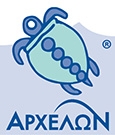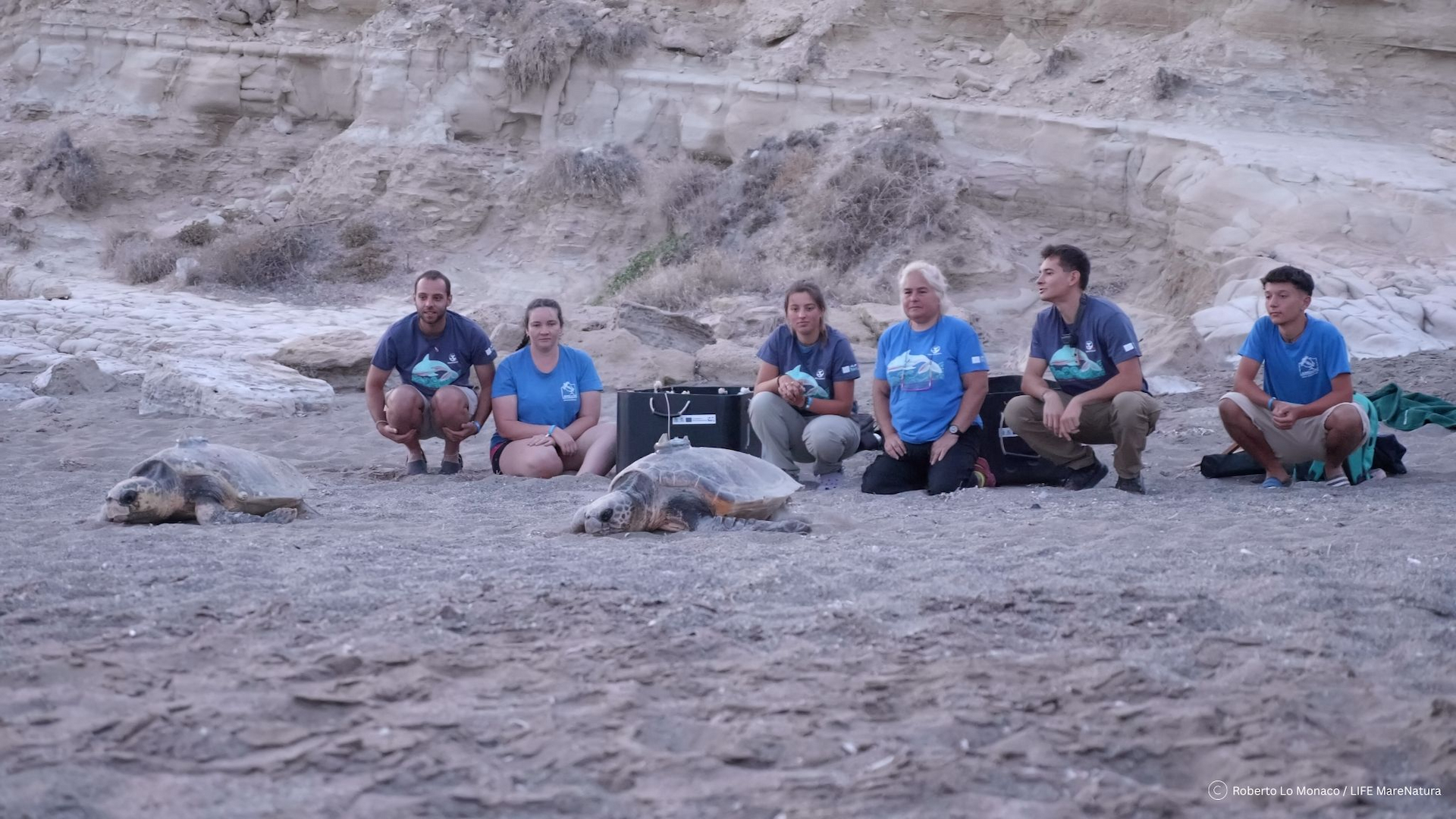New Adaptation Strategies for Sea Turtles and Mediterranean Monk Seals
Institutions, associations and researchers will work for 5 years alongside coastal communities to evaluate and respond to the effects of rising sea levels and ocean warming
Finding possible adaptation solutions for animal species that live in the sea and along our Mediterranean coasts, habitats which are increasingly affected by the climate crisis. This is the objective of the LIFE ADAPTS (climate change ADAptations to Protect Turtles and monk Seals) project, which has just been launched and is financed by the European Union. The project will last 5 years and will be carried out in three Mediterranean countries, Italy, Greece and Cyprus, where key reproductive and living areas have been identified for three symbolic species of the Mare Nostrum: green turtle (Chelonia mydas), loggerhead turtle (Caretta caretta) and Mediterranean monk seal (Monachus monachus).
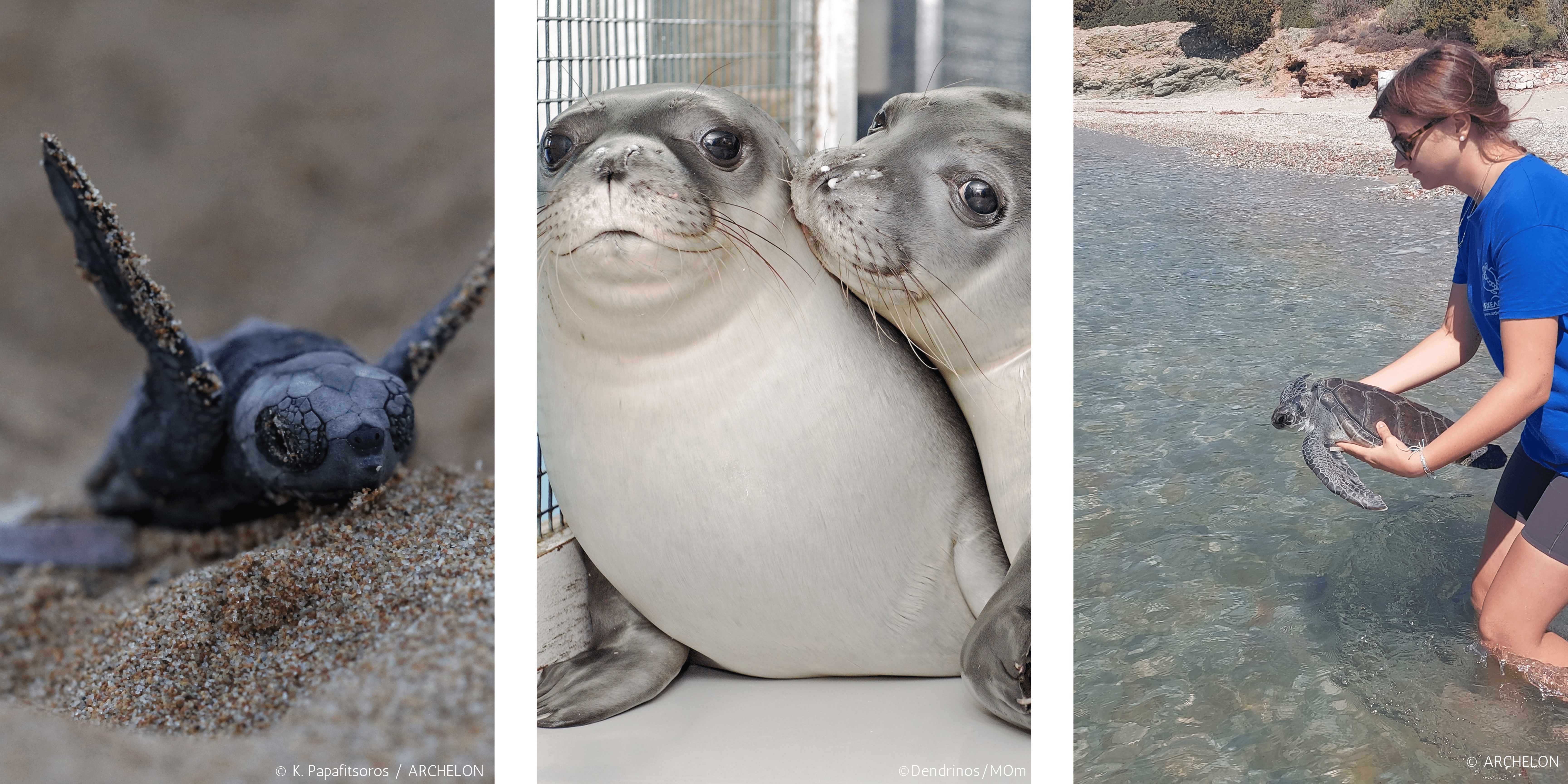
The team is coordinated by the Department of Biology of the University of Pisa and includes research bodies, institutions, associations specialised in the protection of the three species, experts and researchers. Seven partners are involved: WWF and Gruppo Foca Monaca in Italy, ARCHELON (The Sea Turtle Protection Society of Greece) and MOm (Hellenic Society for the Study and Protection of the Monk Seal) in Greece and MEDTRACS (Mediterranean Turtle Research and Conservation Society), the Oceanography Center of the University of Cyprus (OC-UCY) and the Department for Fisheries and Marine Research of the Ministry of Agriculture, Rural Development and the Environment (DFMR) in Cyprus.
By 2030, thanks to the LIFE ADAPTS project, it will be possible to evaluate the three species’ resistance and resilience to the effects of climate change, such as sea level rise and temperature increase. These are, in fact, among the factors that can influence the suitability of breeding sites, the reproductive dynamics and food resources availability of these animals. The aim of the project is to develop strategies capable of protecting their crucial habitats, both in the open sea and along the coasts and stimulate the species' resilience capabilities. Innovative techniques, already partially successfully tested, will be used such as environmental DNA (collection of water or other kinds of samples to identify the presence of target species), surveys with drones, satellite telemetry, camera traps, diving, direct beach monitoring and sand temperature measurements. In addition to experts and researchers, volunteers, divers, and boat owners will be involved in an array of citizen science activities. One of the key points of the project is the involvement of local communities and authorities, as fundamental subjects for achieving the project’s objectives.
Monk seals and loggerhead turtles have been long established as flag species for marine nature conservation in Greece due to the consistent efforts of MOm (Hellenic Society for the Study and Protection of the Monk Seal) and ARCHELON (The Sea Turtle Protection Society of Greece). The most vital breeding habitats of both species were eventually designated as the first marine protected areas in Greece and the threat of extinction in the Mediterranean was averted. However, the previous success is put to the test again by such factors as sea level rise and temperature increase which is likely to impact their populations in the coming years.
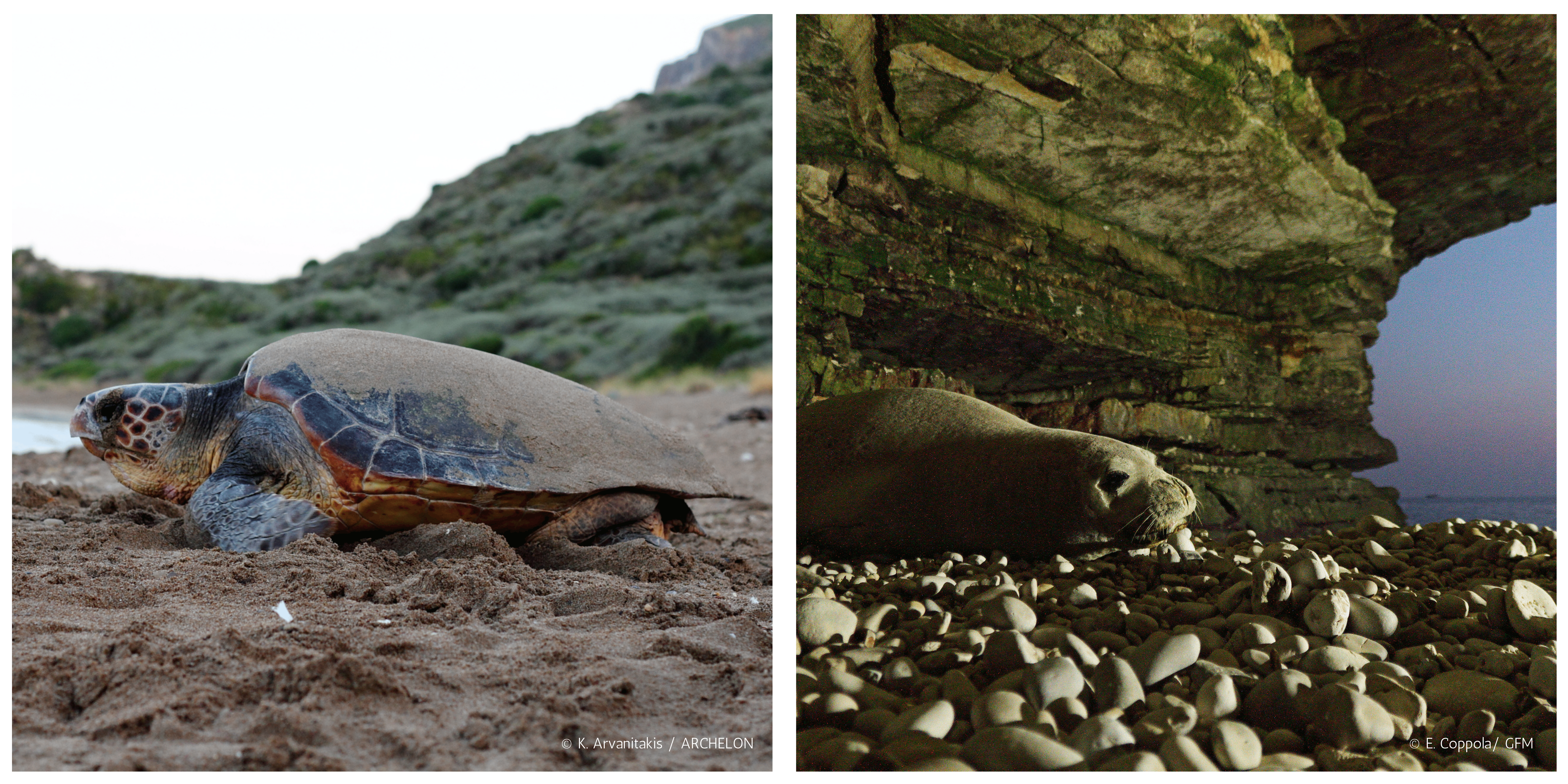
The planned actions by 2030 are: identification and mapping of breeding sites and assessment of their suitability in light of future climate change scenarios, identification of important marine areas, implementation of conservation measures, dissemination of informative material to the general public, authorities or municipalities, such as intervention and behavioural protocols to be followed in the event of sightings or finding of individuals in difficulty, rescue interventions on injured animals and their recovery for release into the wild, reduction of anthropogenic impacts at key sites such as caves, nesting beaches and feeding areas, improvement of conservation measures for the three species in Marine Protected Areas and other key sites.
CLIMATE EFFECT ON SEA TURTLES AND MONK SEALS
Sandy coasts used by marine turtles as nesting ground and caves chosen by monk seals for breeding face risks linked to the effects of the ongoing climate crisis: these two types of sites are influenced, for example, by sea level rise which could cause their disappearance or reduce their potential. Furthermore, the increase in sand temperatures can cause a "feminisation" effect for sea turtles (increase in the percentage of female individuals in hatches).
Rising sea levels due to global warming could lead to the flooding of monk seal pupping caves, resulting in the loss of these critical habitats for a successful reproduction of these animals. This could lead to reduction of pups produced, with consequent reduction of genetic diversity and potentially resulting in population decline. At sea, climate change also affects food availability and can cause changes in the distribution of feeding areas and the availability of resources, such as, for example, with the increase in alien species. Having a clear picture of the potential changes in advance and implementing the adaptive measures developed during the project will allow us to protect these iconic Mediterranean species more effectively in the future.
For more information: wwf.it/lifeadapts
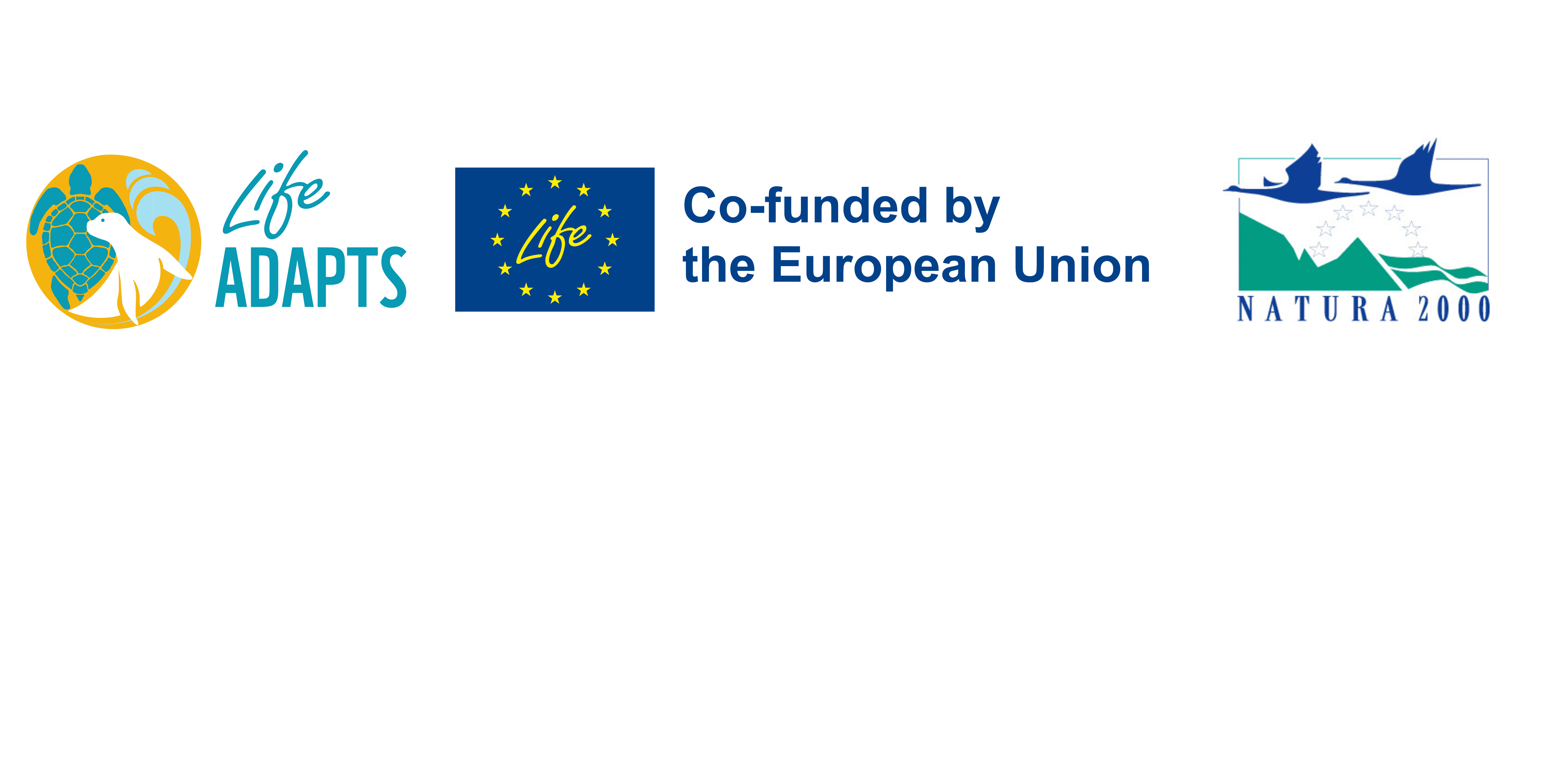
World Sea Turtle Day: We can all live together!
World Oceans Day: Conservation and Anthropogenic “Wounds” in Laganas Bay, Zakynthos
RECENT NEWS
- OUR NEWS24/10/2025
Filming of the LIFE MareNatura documentary is completed
From seabird monitoring and genetic sampling, to unique underwater footage of marine mammals, the testimonies of scientists bring to life the hidden stories of the sea.
- OUR NEWS23/10/2025
ARCHELON participates in the "Science Festival 2025 – The Voice of the Ocean"
The French Institute of Greece is organizing a celebration from 10 to 27 November 2025 dedicated to science and the ocean! World premiere of the LIFE MareNatura documentary on November 13th.
- OUR NEWS22/10/2025
Kyparissia Bay: ARCHELON Records 6,100 Nests and Calls on the State to Immediately Implement the National Action Plan for the Loggerhead
In 2025 approximately 6,100 nests were recorded, marking a 74% increase compared to the average of the previous 12 years!
- OUR NEWS10/10/2025
We bid farewell to a devoted environmentalist and friend, Yiannis Roussopoulos.
- OUR NEWS02/10/2025
Jane Goodall’s words still warm our hearts
Thank you, Dr. Goodall, for all that you have taught us and for the life example you have left behind.
- OUR NEWS29/09/2025
Turtles, Dolphins, and Birds: Local Communities and Scientists come together for the future of Amvrakikos Gulf
A one-day conference held on Wednesday, September 24, in Menidi, Amfilochia, united the voice of the local community with leading scientists and environmental organizations for Amvrakikos Gulf.
- OUR NEWS26/09/2025
Biologists from the 'LIFE ADAPTS' project send their message to the community
- OUR NEWS23/09/2025
Aquila Rithymna Beach Hotel becomes an Advocate for ARCHELON in Rethymno
The hotel's generous donation directly supports the costs of conservation activities during the 2025 and 2026 nesting seasons.
- OUR NEWS19/09/2025
A Season of Success for the Amvrakikos Project
The 2025 field season for ARCHELON's Amvrakikos project has officially come to a close!
- OUR NEWS12/09/2025
Τhe first green sea turtle nest has hatched in Naxos island!
The emergence of a nest on Naxos is a sign that the geographical range of this threatened species in the Mediterranean may be expanding.
- OUR NEWS09/09/2025
School Tours at ARCHELON: Reserve Your Spot from September 11
The magical world of sea turtles and the people who are taking care of them is waiting, offering you a unique experience and valuable knowledge.
- OUR NEWS05/09/2025
The first report of 2025 delivered from Romanos Beach, Messinia
From mid-May to early September 2025, the project recorded about 80 nests along the 2.7 km stretch of Romanos beach.
- OUR NEWS29/08/2025
Turtle Run in Chania: Lace up your running shoes and get ready!
September 7th, Chania: Join the event and support the protection of one of the most iconic marine species in the Mediterranean.
- OUR NEWS27/08/2025
Citizens Help us Map Sea Turtle Sporadic Nesting in the Ionian Sea
This study is particularly important as it highlights the power of citizen science. Public eyes on beaches, outreach through online platforms and new reporting tools are expanding our understanding of turtle nesting beyond the beaches we monitor.
- OUR NEWS20/08/2025
A nesting turtle brings hope amidst a night of fire
After a 12-hour period filled with fear and uncertainty, the family witnessed a miracle of nature. “It brought us peace and reminded us of what is important”.
